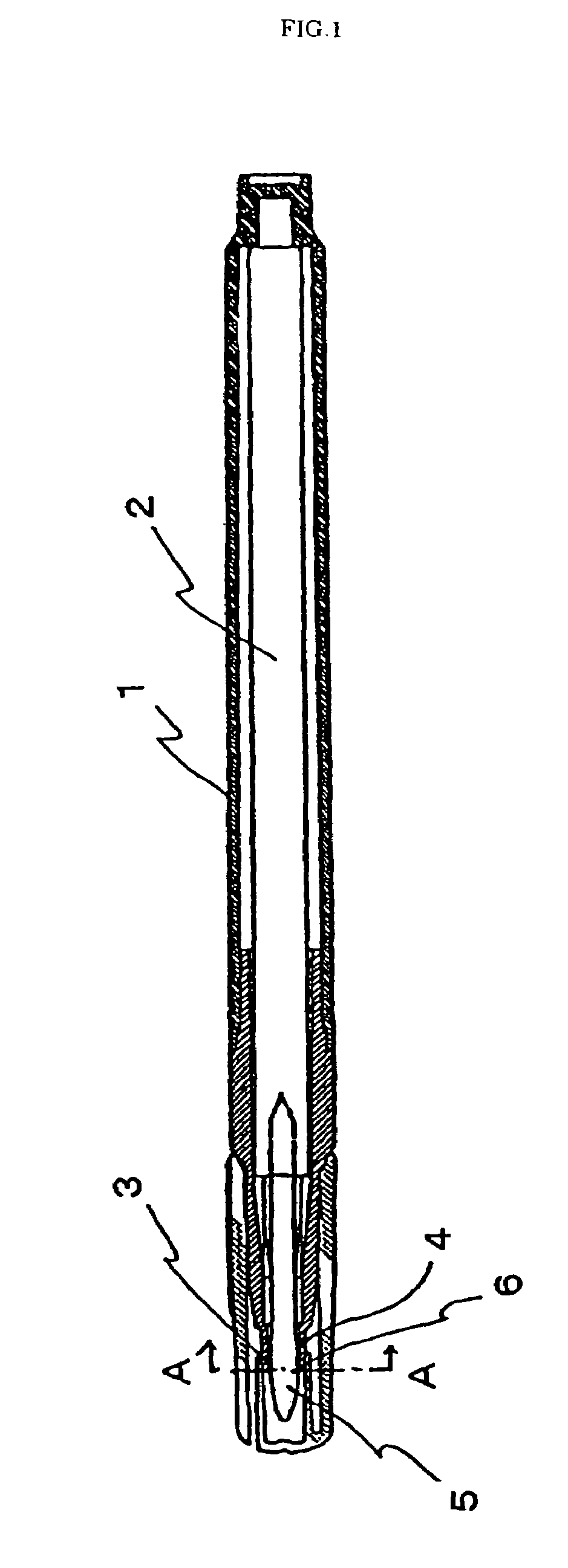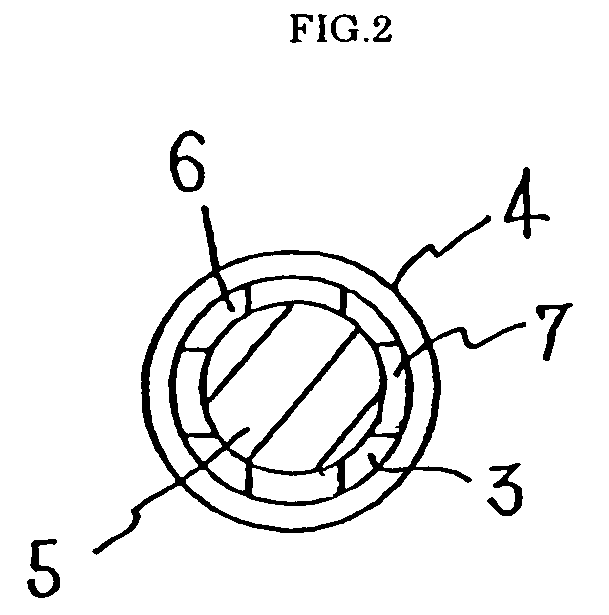Water-based pigment-containing ink composition for central core type marking pen
a technology of water-based pigments and ink compositions, which is applied in the direction of coatings, printing,inks, etc., can solve the problems of ink compositions being clogged, written marks to have gradation, and becoming thin in writing, so as to achieve good fluidity of ink and writing distance
- Summary
- Abstract
- Description
- Claims
- Application Information
AI Technical Summary
Benefits of technology
Problems solved by technology
Method used
Image
Examples
example
[0091]Although the present invention is explained as follows citing examples, the present invention is not specifically limited to these examples. In the following examples and comparative examples, component amount is shown by weight percent and the remaining portion is water.
[0092]
Comparative Example 1Coloring resin particle dispersion (solid content 55%)1)45.0Titanium oxide dispersion2)5.0Fixing resin (styrene-acryl acid copolymer)3)5.0Thickening agent (polyacrylic acid4))1.0Leveling agent (acetylene glycol5))0.5Ethylene glycol3.0Antiseptic mildew proofing agent0.3Example 1Coloring resin particle dispersion1)45.0Titanium oxide dispersion2)5.0Fixing resin (styrene-acryl acid copolymer)3)5.0Thickening agent (polyacrylic acid4))3.0Leveling agent (acetylene glycol5))0.5Ethylene glycol3.0Antiseptic mildew proofing agent0.3Example 2Phthalocyanine blue dispersion (solid content 10%)6)25.0Titanium oxide dispersion15.0Fixing resin (styrene-acryl acid copolymer)2.0Thickening agent (polyacr...
examples 4 to 23
[0105]Next, with a composition and a compounding amount (parts by weight) as shown in tables 2 or 3, by a method of producing a water-based metallic ink composition for central core type marking pens, a water-based metallic ink composition of Examples 4 to 23 was obtained. When this ink was left to stand, with a passage of time, an aluminum pigment agglomerated and slowly separated. The separated substance was not in a state of a hard cake, and it could be re-dispersed. By this, settlement of an aluminum pigment forming a hard cake was prevented.
PUM
| Property | Measurement | Unit |
|---|---|---|
| median diameter | aaaaa | aaaaa |
| temperature | aaaaa | aaaaa |
| thread density | aaaaa | aaaaa |
Abstract
Description
Claims
Application Information
 Login to View More
Login to View More - R&D
- Intellectual Property
- Life Sciences
- Materials
- Tech Scout
- Unparalleled Data Quality
- Higher Quality Content
- 60% Fewer Hallucinations
Browse by: Latest US Patents, China's latest patents, Technical Efficacy Thesaurus, Application Domain, Technology Topic, Popular Technical Reports.
© 2025 PatSnap. All rights reserved.Legal|Privacy policy|Modern Slavery Act Transparency Statement|Sitemap|About US| Contact US: help@patsnap.com



